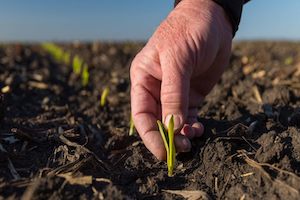Making decisions about fertilizer, manure, and lime application can be challenging for producers. To help agricultural professionals who are looking for advice, experts from the University of Nebraska-Lincoln’s Institute of Agriculture and Natural Resources are now providing insight.
They note that sampling soil in either the fall or spring can be efficient for determining potassium, phosphorous, sulfur, micronutrient, and lime requirements. However, it’s critical to be consistent about the time of year that the soil is sampled if producers are seeking trends in nutrient concentrations.
The timing of soil sampling for nitrogen recommendations can be critical as snowmelt and other precipitation in early spring impact nitrogen losses. The experts recommend collecting pre-plant soil nitrate-nitrogen soil samples to a 2- or 3-foot depth.
Grid sampling of between 1 and 2.5 acres should be considered if the soil type or previous management has caused variation in nutrient variabilities. Zone, or directed sampling, should also be taken into account if yield maps show consistency from one layer to another layer.
Finally, the experts state that it is critical to represent the root zone where plants will uptake nutrients. For this reason, sampling depth is a key factor. Producers should try to avoid sampling too shallow, as this can result in unusually high soil test results – nutrients become concentrated near the surface of the terrain.
For more insight into effective soil sampling and guidelines for interpreting soil test results, consult the Extension ebook, “Nutrient Management for Agronomic Crops of Nebraska.”
